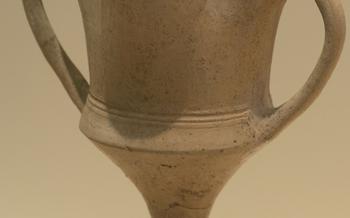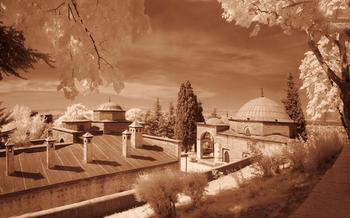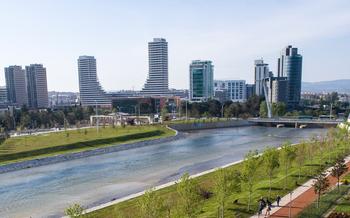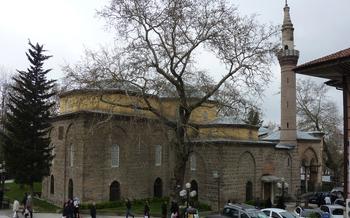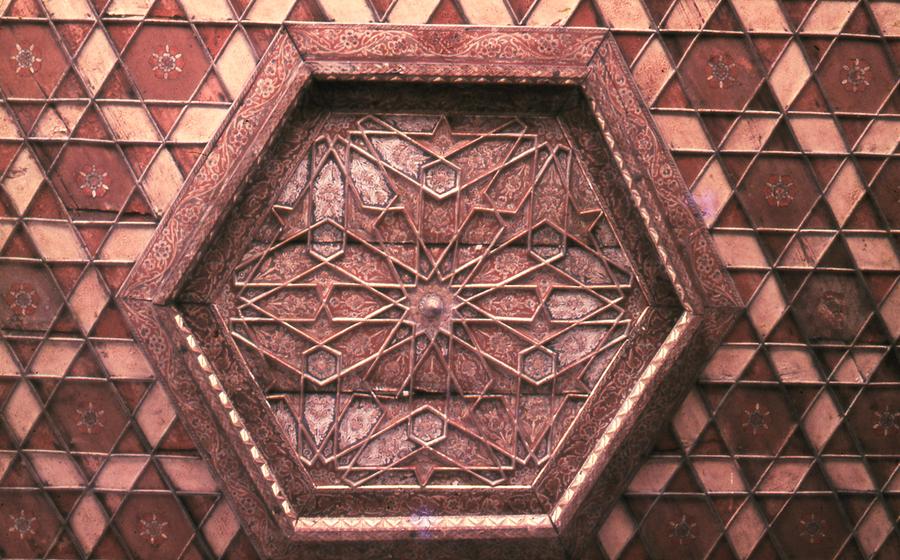
Ottoman House Museum
- The Ottoman House Museum: A Window into Bursa’s Rich History
- Location and Accessibility: Finding the Hidden Gem
- Hours of Operation and Admission Fees: Planning Your Visit
- Architectural Masterpiece: Exploring the Ottoman Design
- Stepping into the Past: Unveiling the Museum's Exhibits
- A Glimpse into Ottoman Lifestyle: Daily Life in the Mansion
- The Winter Room: A Showcase of Ottoman Craftsmanship
- The Kitchen: The Heart of the Ottoman Home
- The Reception Room: A Place for Formal Gatherings
- The Library: A Treasure Trove of Knowledge
- The Hammam: A Place for Purification and Relaxation
- Insider Tip: Unveiling Bursa's Hidden Gems
The Ottoman House Museum: A Window into Bursa’s Rich History
In the heart of Bursa, a city steeped in Ottoman heritage, lies a hidden gem: the Ottoman House Museum. This enchanting museum offers a glimpse into the grandeur and opulence of the Ottoman era, transporting visitors back in time to a world of intricate architecture, exquisite craftsmanship, and rich cultural traditions. As you step through the gates of this historic mansion, you will be captivated by its stunning architecture, which epitomizes the elegance and sophistication of Ottoman domestic design. The museum serves as a testament to Bursa's vibrant past, showcasing the city's enduring legacy as the former capital of the Ottoman Empire. Prepare to be mesmerized as you wander through its rooms, each telling a unique story of Ottoman life and culture, immersing you in the grandeur of this bygone era.
Location and Accessibility: Finding the Hidden Gem
The Ottoman House Museum is nestled in the heart of Bursa's charming historical district, just a short walk from the city's other iconic landmarks. It's located at Hoca Çelebi Mahallesi, Mudanya Yolu Caddesi, No: 10, opposite the Bursa Archaeology Museum.
Reaching the museum is a breeze, whether you prefer to explore on foot or utilize public transportation. If you're a history buff, consider combining your visit with a tour of the nearby Bursa Grand Mosque, Ulu Cami, and the Koza Han, a vibrant covered market showcasing traditional Turkish handicrafts.
For those arriving by car, there are several parking options available in the vicinity. However, it's worth noting that the narrow streets of the historical district may pose a challenge for larger vehicles.
Visitors with limited mobility should be aware that the museum's entrance involves a few steps, and some areas within the house may have uneven surfaces. Nevertheless, the museum staff is incredibly accommodating and will do their utmost to ensure a comfortable and enjoyable visit for all guests.
Hours of Operation and Admission Fees: Planning Your Visit
The Ottoman House Museum welcomes visitors from various parts of the world throughout the year. To ensure a smooth and enjoyable visit, it's important to be aware of the museum's hours of operation and admission fees.
The museum is open to the public every day of the week, except for Mondays, from 9:00 AM to 5:00 PM. During the summer months (June to September), the museum extends its hours until 7:00 PM to accommodate the increased number of tourists. It's worth noting that the museum may have slightly different hours during public holidays or special events, so it's advisable to check their website or contact them in advance to confirm.
Admission fees to the Ottoman House Museum are quite affordable, making it accessible to visitors of all backgrounds. The standard entrance fee for adults is 30 Turkish Lira (approximately 4 USD). Students and seniors are eligible for discounted rates, while children under the age of 12 can enter for free. The museum also offers family tickets and group discounts for larger parties.
Guided tours are available for those who wish to delve deeper into the history and significance of the museum's exhibits. Tours are conducted in English and Turkish, and the cost is typically included in the admission fee. Audio guides are also available for rent, providing visitors with a self-guided tour at their own pace.
To avoid crowds and ensure a more enjoyable visit, it's advisable to plan your visit during the off-season (October to May) or on weekdays. The museum tends to be busiest during the summer months and on weekends, especially during the peak tourist season.
For visitors with limited mobility, the museum is wheelchair accessible, with ramps and elevators provided to facilitate easy movement throughout the premises. The staff is also friendly and accommodating, willing to assist visitors with any special needs or requirements.
Architectural Masterpiece: Exploring the Ottoman Design
The Ottoman House Museum is a testament to the architectural brilliance of the Ottoman era. As you step through its doors, you'll be captivated by the exquisite craftsmanship and intricate details that adorn every corner of the mansion. The courtyard, a central feature of Ottoman homes, invites you to relax and soak in the tranquil atmosphere. Its overhanging eaves, supported by slender columns, provide shade from the scorching sun, while the intricate woodwork and lattice screens add a touch of elegance and privacy.
The overhanging eaves, a hallmark of Ottoman architecture, not only provide shelter from the elements but also create a sense of grandeur and spaciousness. The intricate woodwork, often featuring geometric patterns and floral motifs, showcases the exceptional skills of Ottoman artisans.
Take a moment to compare the architectural features of this museum with those of other Ottoman houses or mansions in the region. You'll notice similarities in the use of courtyards, overhanging eaves, and intricate woodwork, reflecting the common architectural traditions of the Ottoman Empire. Each mansion, however, possesses its unique charm and character, showcasing the diversity and creativity of Ottoman architects and builders.
Stepping into the Past: Unveiling the Museum's Exhibits
The Ottoman House Museum is not just a showcase of architectural brilliance; it is also a treasure trove of artifacts, furniture, and decorative items that provide a glimpse into the daily lives, culture, and traditions of the Ottoman people. From intricate carpets and hand-painted ceramics to finely carved wooden furniture and gleaming copperware, each exhibit tells a story of the opulence and refinement that characterized Ottoman life.
One of the highlights of the museum's collection is a stunning collection of Ottoman textiles. The intricate embroidery, vibrant colors, and delicate fabrics showcase the artistry and craftsmanship of the Ottoman textile industry. Visitors can also admire a wide variety of Ottoman jewelry, including gold and silver necklaces, bracelets, earrings, and rings adorned with precious stones and intricate filigree work.
The museum also houses a fascinating collection of weapons, including swords, daggers, and maces, which provide insights into the military prowess of the Ottoman Empire. These weapons are not just historical relics; they are also works of art, with their intricate engravings and inlaid designs showcasing the skill and artistry of Ottoman metalworkers.
Personal stories and anecdotes bring these exhibits to life, connecting them to the real people who lived and breathed in this historic mansion. Visitors can learn about the daily routines of Ottoman families, the rituals and customs they observed, and the challenges and joys they experienced. Through these personal narratives, the museum offers a glimpse into the human side of Ottoman history, making it more relatable and engaging for visitors.
A Glimpse into Ottoman Lifestyle: Daily Life in the Mansion
Stepping into the Ottoman House Museum is like stepping back in time, offering a glimpse into the daily lives of Ottoman families. The mansion's various rooms, each with its own distinct function, provide insights into the social hierarchy and gender roles that shaped Ottoman domestic life.
The selamlık, or men's quarters, was the public space where men received guests and conducted business. The harem, or women's quarters, was a private domain where women lived and raised their children. The kitchen was the heart of the home, where meals were prepared and family members gathered.
The Ottoman household was a hierarchical society, with the father or eldest male figure as the head of the family. Women were responsible for managing the household and raising the children, while men were responsible for earning a living and representing the family in public.
Daily life in the Ottoman household was centered around family and community. Meals were eaten together, and families often gathered in the courtyard or winter room to relax and socialize. Religious practices were an important part of daily life, and families would often attend the local mosque together.
Visiting the Ottoman House Museum offers a unique opportunity to experience the daily lives of Ottoman families and gain a deeper understanding of Ottoman culture and society.
The Winter Room: A Showcase of Ottoman Craftsmanship
The winter room, also known as the "kış odası" in Turkish, is a true testament to the skill and artistry of Ottoman craftsmen. Step into this cozy and inviting space, and you'll be greeted by a symphony of intricate carvings, colorful tiles, and a grand fireplace that exudes warmth and charm.
The fireplace, the room's focal point, is a masterpiece in itself. Its intricate carvings depict scenes from Ottoman court life, hunting expeditions, and mythical creatures. The vibrant tiles that adorn the walls and niches add a touch of color and vibrancy, creating a visually stunning backdrop.
Gather around the fireplace with a warm cup of tea and imagine yourself transported back in time. Picture Ottoman families huddled together, sharing stories, and seeking solace from the harsh winter cold. The room's intimate atmosphere invites you to linger and soak in the warmth and hospitality that characterized Ottoman winter gatherings.
As you explore the winter room, pay attention to the hidden details that reveal the meticulous craftsmanship of the artisans who created it. From the delicate floral motifs carved into the woodwork to the intricate patterns of the tiles, every element in this room speaks to the pride and attention to detail that went into its construction.
The Kitchen: The Heart of the Ottoman Home
The kitchen in the Ottoman House Museum is a testament to the culinary traditions of the Ottoman Empire. Its layout and equipment provide insights into the daily lives of Ottoman families and the importance of food in their culture. The kitchen is equipped with a large hearth, a sink, and various cooking utensils, all of which have been preserved in their original condition.
Visitors to the museum can learn about the traditional Ottoman diet, which consisted of a variety of dishes made with fresh, seasonal ingredients. The kitchen is also a reminder of the importance of family meals in Ottoman society, as it was the center of food preparation and where families would gather to share meals and stories.
One of the most striking features of the kitchen is its large hearth, which was used for cooking and heating the home. The hearth is surrounded by a series of niches, which were used to store spices, herbs, and other cooking ingredients. The kitchen also features a sink, which was used for washing dishes and preparing food.
The cooking utensils in the kitchen are a testament to the skill and craftsmanship of Ottoman artisans. There are a variety of pots, pans, and other cooking tools, all of which are made of copper or brass. The utensils are decorated with intricate designs, which reflect the Ottoman love of beauty and craftsmanship.
The kitchen in the Ottoman House Museum is a fascinating glimpse into the daily lives of Ottoman families. It is a reminder of the importance of food and family in Ottoman culture, and it is a valuable resource for anyone who is interested in learning more about Ottoman history and culture.
The Reception Room: A Place for Formal Gatherings
The reception room, also known as the selamlık, was a significant space in the Ottoman House Museum dedicated to formal gatherings, receiving guests, and conducting business. This grand and imposing room reflected the Ottoman tradition of hospitality and etiquette, showcasing the family's wealth and status.
Imagine stepping into this elegant chamber, greeted by the intricate details of its décor. The walls were adorned with vibrant tiles and ornate carvings, while the ceiling was a masterpiece of painted designs and hanging chandeliers. The room's furnishings exuded an air of sophistication, with plush cushions and carpets arranged around low tables.
In this formal setting, the Ottoman family would receive guests, discuss business matters, and entertain important visitors. The head of the household, often the patriarch, would preside over these gatherings, demonstrating his authority and leadership. The reception room was a place where alliances were forged, deals were made, and the family's reputation was upheld.
One anecdote that captures the essence of the reception room is the story of a young diplomat visiting the Ottoman House. As he entered the room, he was struck by its grandeur and the warm welcome he received from the family. He was served traditional Turkish coffee and engaged in lively conversations about politics, culture, and history. The diplomat left the reception room feeling deeply impressed by the hospitality and sophistication of the Ottoman family.
For visitors today, the reception room offers a glimpse into the formal side of Ottoman life. It is a reminder of the importance of etiquette, hospitality, and the intricate social dynamics that shaped Ottoman society.
The Library: A Treasure Trove of Knowledge
The Ottoman House Museum boasts a remarkable library that serves as a treasure trove of knowledge and cultural heritage. Its collection umfasst eine große Auswahl an Handschriften, Büchern und Artefakten, die sich auf die osmanische Geschichte und Kultur beziehen. Diese Sammlung ist von unschätzbarem Wert für Wissenschaftler, Historiker und alle, die sich für die Vergangenheit des Osmanischen Reiches interessieren.
Die Bibliothek ist nicht nur ein Ort des Lernens und der Gelehrsamkeit, sondern auch ein Ort der Ruhe und Kontemplation. Die Besucher können hier inmitten von historischen Schätzen die Atmosphäre einer vergangenen Ära spüren. Die Bibliothek ist ein Muss für alle, die sich für die Kultur und Geschichte des Osmanischen Reiches interessieren.
Neben den historischen Büchern und Manuskripten beherbergt die Bibliothek auch eine Sammlung von Artefakten, die einen Einblick in das tägliche Leben der Osmanen gewähren. Zu diesen Artefakten gehören unter anderem Schreibutensilien, Tintenfässer und Siegel.
Ein Besuch in der Bibliothek des Ottoman House Museums ist eine einzigartige Gelegenheit, mehr über die Geschichte und Kultur des Osmanischen Reiches zu erfahren. Die Bibliothek ist ein Ort, an dem die Vergangenheit lebendig wird und die Besucher in eine andere Zeit versetzt werden.
The Hammam: A Place for Purification and Relaxation
Immerse Yourself in the Ancient Rituals of the Ottoman Bath
Step into the enchanting world of the hammam, a traditional Turkish bath that has been an integral part of Ottoman culture for centuries. Experience the rejuvenating power of water, steam, and skilled hands as you embark on a journey of purification and relaxation.
The hammam at the Ottoman House Museum is a testament to the importance of bathing and well-being in Ottoman society. Its intricate tilework, marble benches, and domed ceilings create an atmosphere of serenity and tranquility. As you enter the hammam, you will be greeted by a friendly attendant who will guide you through the process.
Begin your experience by indulging in the soothing warmth of the steam room. Let the steam open your pores and release any tension or stress. Next, move to the massage table, where a skilled masseur will knead away any knots or aches using traditional techniques.
After your massage, cleanse your body with soap and water in the bathing area. Take your time to relax and enjoy the feeling of pure bliss as the water washes away the impurities of daily life.
Finally, retreat to the cooling room, where you can sip on refreshing tea and unwind in the tranquil ambiance. Feel your body and mind rejuvenated as you emerge from the hammam, ready to embrace the wonders of Bursa.
Insider Tip:
For an authentic experience, consider visiting the hammam on a traditional Turkish bath day, which is typically on a Tuesday or Friday. You will have the opportunity to mingle with locals and immerse yourself fully in the local bathing culture.
Insider Tip: Unveiling Bursa's Hidden Gems
Beyond the Ottoman House Museum, Bursa holds a trove of hidden gems waiting to be discovered. For those seeking a unique and authentic experience, I highly recommend exploring these lesser-known treasures.
One such gem is the Irgandi Bridge, a stunning 15th-century bridge located in the heart of the city. With its graceful arches and serene views over the river, it offers a glimpse into Bursa's rich architectural heritage.
Another hidden gem is the Green Mosque, tucked away in a quiet neighborhood. Its exquisite tilework and serene atmosphere create a sense of tranquility, making it a perfect place for contemplation and spiritual reflection.
For those interested in history, the Bursa Archaeological Museum is a must-visit. It houses a fascinating collection of artifacts from Bursa's past, including ancient pottery, sculptures, and coins, providing insights into the city's rich cultural legacy.
To experience Bursa's vibrant culinary scene, head to the Arasta Bazaar, a charming covered market filled with local delicacies. From traditional Turkish sweets to aromatic spices, the bazaar offers a feast for the senses and a chance to sample some of the city's culinary delights.
Remember, the key to discovering these hidden gems lies in venturing off the beaten path and embracing the local culture. Ask for recommendations from friendly locals, explore the city's backstreets, and let your curiosity guide you. Bursa is a city that rewards those who seek out its hidden treasures.
